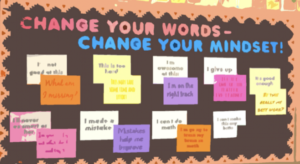It’s Not About The Grade, It’s About the Growth: 5 New Mindsets for Hybrid Assessment

It’s the late afternoon with the sun just beginning to make its descent on the horizon. The foreign language teacher sits at her desk in a cramped corner of her bedroom/ makeshift office; her computer screen opened to a new Zoom window. One of her fifty 10-year-old student’s faces fills the screen, shades of light streaking across it from his cracked living room window. He’s visibly nervous. After a few reassuring words of encouragement, his teacher begins the series of dialogue prompts.
After each prompt, the student pauses to glance over his shoulder. His teacher isn’t quite sure what he’s looking for but his eyes are shifty and unfocused. After a few head turns, and a shadow that quickly passes across his screen, the student unmutes his microphone and begins each response.
Sound familiar?
High-quality assessment was already tough to administer in the physical classroom environment; in a remote or hybrid environment, it feels downright impossible.
How do we evaluate student learning in a fair and equitable way? How do we grade their work when we don’t know who it was them that actually completed it? What tool can we use that will prove legitimacy and assessment integrity?
According to Evelyn McCulloch, Director of Educational Technology for I-Tech Support, we are asking the wrong questions.“We need to let the cheating piece go. Instead of looking for a tool that will prove legitimacy, we need to find tools that will create habits.”
Below are five habits for high-quality assessment, and tools to support them in your remote or hybrid environment.
Habit #1: Make Assessment Community Owned
With students spread across the city with varying access to the internet, it’s hard to imagine how to create the kind of community we enjoyed in the classroom. However, with a little imagination and creativity, some teachers have not only created community but have also developed systems to keep the community intact and learning and growing together. Sara Lev, an early years project-based educator uses dynamic tools like Flipgrid for students to respond to discussion prompts, and SeeSaw for a variety of regular check-ins, like creating ‘community webs,’ or sharing and discussing family portraits in her “Creating Our Classroom Community” Unit. During class meetings and project work times, she holds small group sessions with four or five virtual breakout rooms for students to offer feedback via ‘put ups’ and ‘wonderings’ on their classmates’ work. Sara facilitates each session with guiding questions and protocols. In this way, assessment in Sara’s class is not a one-time teacher-generated evaluation, but a continual community-owned process. Check out her project website here to see how she helps document the process and create a repository of resources.
Questions for Reflection:
How can you make assessments feel more community-owned? How might you use tools like Flipgrid, SeeSaw, and Zoom Breakout Rooms to support you?
Habit #2: Use Real World Experts for Feedback
Do you remember career day as a kid? I remember mine well. I got to put on a fireman’s hat and pretend to fight fires; and also got the chance to bang a judge’s gavel and say ‘Order, order, we will have order in the court!’ These experiences made learning fire safety or the parameters of the law much more enjoyable! How might we use these same real world experts to support our students in a virtual environment?
Evelyn McCulloch, the former innovations coordinator at Park Maitland starts by setting up dynamic, real world learning experiences. For example, when the school tasked her with creating a department and database for community partners, she outsourced the work to her 5th-grade students. In small virtual teams, students were tasked with developing a mission, logo, outreach material, and elevator pitch for the new department. Temporary furloughed employees from nearby Disneyland and Universal Studios acted as mentors in the process, offering valuable feedback through short Zoom calls on student designs, while also connecting them to a wider audience. The culminating experience was professionally produced FlipGrid elevator pitches.
Questions for Reflection:
Who do you know (parents, friends, organizations) that can act as mentors to assess and offer feedback for student work? How might you use virtual tools like Zoom, Padlet, Flipgrid to connect them in a remote environment?
Habit #3: Provide Continual Voice and Choice
Do your students have voice and choice in how they are assessed?
In virtual environments, with students having only a limited time to connect throughout the day, providing choice and flexibility is crucial to keep them engaged. At The Harbour School, an innovative k-12 school in Hong Kong, voice and choice is part of their lifeblood. During Arts Interim week, the entire high school moves off of the traditional timetable to take part in intensive projects throughout the city. Humanities and Arts Teachers team up to offer experiences ranging from exploring their identities through visual art to mapping the history of local culture through photography. School closures and the move to remote learning didn’t hinder them from offering the experiences again this year. Matthew Copp and Julian Buck (@mrbuckstopshere) teamed up to offer ’The Art of Storytelling’ via zoom workshops, open work times, and dynamic virtual lessons. Students were tasked with adapting or creating their own short films to tell a complex story of the world around them. Using the ‘Hero’s Journey’ as the model for dynamic stories, some students remade the Batman Series into a Communist Takeover, while others created their own Manga stories with original artwork and screenplay. Matthew Copp recalls receiving a message at 4 am in the morning from a student asking to ‘get feedback on his drawing.’
The culminating experience, a voluntary virtual exhibition for the student community. Almost everyone showed up.
When we elevate students’ freedom to choose, we also elevate the level of assessment.
Questions for Reflection:
Do you offer choice in how students are assessed? How might creating choices elevate the quality of your student’s work?
Habit #4: Measure Growth
KIS International School, a forward-thinking international school in Bangkok, Thailand decided to run a grand experiment with their middle school students. They ditched mandated virtual classes for a day and replaced it with an optional ‘Wonder Day Project.’ The pretext was simple. Students were asked to complete one of 5 possible projects, and use a virtual tool called Trello to record their progress. Teachers held their breath.
Almost 85% of students took on the optional challenge; and over 80% completed the work.
Projects ranged from student-designed t-shirts and infographics to promote safe hygiene, to imaginative virtual hospitals to allow for a higher intake of CoVid patients. Students collaborated virtually in teams and documented their progress in group project boards that showcased their 1st, 2nd and 3rd drafts.
Rather than act as a micro-manager, Alison Yang, the educator/designer of the learning experiences facilitated the process by offering kind, helpful, and specific feedback to each project group, while creating a space for their peers to do the same. In this way, assessment was a highly visible journey of growth rather than an end of learning evaluation.
Questions for Reflection:
Do you have a space for students to document and measure their growth? How might you use digital portfolios or tools like Trello/ Padlet to make assessments ongoing?
Habit #5: Create Systems for Continual Reflection
In my 12 years in the classroom, after nearly every exhibition, showcase of learning, or project milestone, students would habitually ask, “You are going to make us reflect now, huh?” And although they begrudged reflection at first, it was soon as much a norm in the classroom as jotting down notes in their planners.
Brett Carrier, an innovative elementary teacher at Park Maitland was able to keep reflection as a regular routine even when she moved learning online.
During her recent ‘Food Truck Project’ in which students designed and marketed unique food trucks for the local community, she used Zoom Breakout Rooms for regular reflection and feedback sessions. She would first introduce the protocol for reflection (lots of useful protocols here) in the main room and then appoint student facilitators to lead reflections on work in smaller breakout rooms. In small groups, students reflected on everything from their initial designs and logos to financing plans and advertisements. Each iteration improved because the reflection was a regular part of the routine.
Questions for Reflection:
How might you make a reflection on learning a regular part of your routine? What structures and protocols can help ensure it is most meaningful?
Covid-19 has provided us with unprecedented challenges in how we assess student learning, but it has also provided us with unprecedented opportunities. We no longer have to use standardized tests and grades to drive the learning process, but instead, dynamic learning experiences that allow for community input, continual feedback and iteration, voice and choice, reflection, and opportunities for continual growth.
See you online!
For more, see:
- 4 Strategies to Support Students with Learning Differences in the COVID-19 Educational Landscape
- Dream Jobs of the Innovation Age
- Crossing the Skills Gap Between Industry 4.0 and CTE Programs
Stay in-the-know with innovations in learning by signing up for the weekly Smart Update.






0 Comments
Leave a Comment
Your email address will not be published. All fields are required.